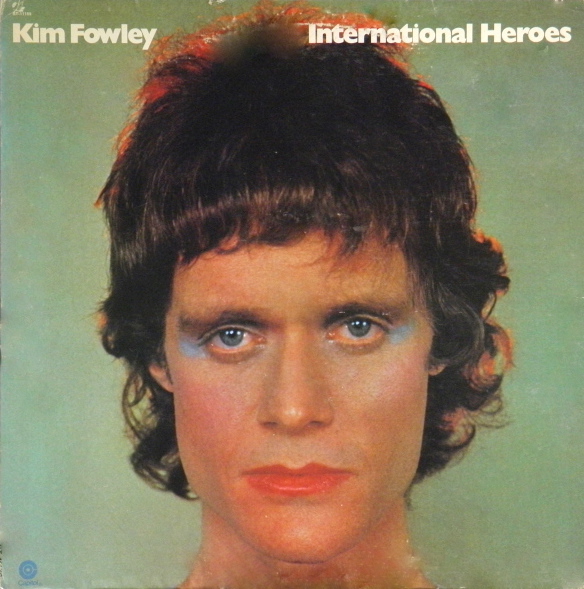“The illusory belief that fame will give you immortality”
- Brian Ferry
- Kim Fowley
- Alice Cooper
Born in London, established in New York and currently living in Los Angeles, Simon Reynolds is a man of many scenes and books and one of never ending curiosity. From “The Sex Revolts – Gender, Rebellion & Rock’n’Roll” over “Rip It Up And Start Again” till “Glam”, his newest epos, he explores the world of pop music as both, fan as much as objective observer.
The kind people at Missy Magazine where so friendly to allow us to publish the english version of a conversation between Simon Reynolds and Christina Mohr.
Domo Arrigato Gozaimasu.
Simon, „Shock and Awe“ seems to be your most personal book – is the topic „glam“ something you’ve been carrying around for years?
Simon Reynolds: It’s interesting you should say that because in some ways it is very personal and in other ways it’s not. In certain respects, the other books were more personal in so far as I was an eyewitness to postpunk and very closely followed the music and all the arguments in the music press in real-time as a teenager and a student. And likewise with the techno-rave book I was right in the thick of the scene as a participant as well as a journalistic observer. Whereas with glam, I only saw glimpses of it as a child on television – and I didn’t know it was called “glam”, I just thought it was pop. So the book involves a lot of historical reconstruction and digging through music papers, and in that sense is more second-hand.
But in other sense it is deeply personal because one key axis that the book turns around is fame versus mortality. Two of the people the book is dedicated to are dead, and the book ends with an essay on Bowie just after his passing that is written very much like a funeral eulogy. The themes that run through the book to do with narcissism, the star’s constant craving for attention, the desire to create a heroic narrative in which you’re the protagonist, the illusory belief that fame will give you immortality, the perils of being a public figure and the distortions of self-image that result – these are issues that are not something I’m contemplating with detached interest. As with Retromania – another very personal book – I’m critiquing syndromes that I feel complicit in or, at least, that I understand from the inside.
But yes, it’s an era of music that I’ve been fascinated with for a long while, going back to rediscovering it as a young man in the mid-Eighties when me and my friends were doing the pop journal Monitor. We actually planned to do a whole issue dedicated to Glam but in the end that never transpired. However recently I came across a notebook in a box full of my old papers and memorabilia, with notes I’d scribbled down in 1985 on artists like Alice Cooper and The Sweet and Gary Glitter. What was eerie was that they were word-for-word very close to the notes I’d made in 2015 when working on Shock and Awe – very similar metaphors, adjectives, perceptions. So if nothing else my brain works exactly the same.
 “Shock and Awe” is also very comprehensive – how would you explain the importance of glam to people who do not know your book?
“Shock and Awe” is also very comprehensive – how would you explain the importance of glam to people who do not know your book?
I think it’s one of the most fascinating eras of pop culture, a sort of knowing recreation or reenactment of the teenage hysteria of Fifties rock’n’roll or Sixties beat music / Beatlemania. So on the hand there is something that is pure and raw about glam rock (the excitement of the fans, the power of the music) but on the other hand, there’s something ironic and meta and distanced and postmodern. The key figures like Marc Bolan, David Bowie, Roxy Music, Alice Cooper, Steve Harley from Cockney Rebel – these guys were all very self-aware, they consciously played games with stardom and had fun with the idea of creating a public persona. They were extremely media-savvy: brilliant interviewees who turned publicity and hype into an art form. In tandem with their often charismatic and creative managers, these stars were deeply involved in constructing their own images and in the marketing and packaging process. So I see glam as pioneering the kind of moves and self-invention strategies that would flourish in the Eighties with figures like Adam Ant, Boy George, and Madonna. I also think there is a link between glam and the most interesting mainstream pop action of the 21st Century. In some cases it’s a direct line of inheritance (Lady Gaga cites Bowie as her ancestor, Ke$ha nods to Bolan and has collaborated with Alice Cooper and with Iggy Pop). In other cases, the connection is indirect and even a little uncanny, but I think it’s there: performers like Nicki Minaj with her multiple personane, and rappers like Kanye West and, Drake, whose main subject is fame and the darkside of stardom. For better or worse, glam invented a new kind of pop star who was as much a mediatician as a musician.
Glamrock was revolutionary in style but not so very much in music – how do you explain that?
The progressive element in glam was its sexual politics and visual excess – the injection of camp, gayness and bisexuality, ambiguity and indeterminacy into pop music in a way that felt new. There had been undercurrents of this in the Sixties, with the camp aura of Ray Davies, and the androgyny of the Rolling Stones. But now you had major pop stars claiming to be gay, cross-dressing in women’s clothing and make-up, and acting in an outrageously camp and theatrical way. Attitudes and ideas from the gay underground of New York filtered into the mainstream via Bowie, the New York Dolls, and figures like Wayne County who got a lot of attention and for a while were touted as future stars. Most of the performers were actually pretty straight underneath – rampantly heterosexual in fact, and sometimes sexist – but the image of glam as gay rock was a sort of “true illusion” that actually changed the world. Many of the actually-gay pop stars of the Eighties felt liberated by glam as teenagers who were only just emerging into their sexuality.
Musically, though, you could argue that glam was regressive, it involved a retreat from all the expansive, increasingly formless sounds of the late Sixties, and the embrace of a simplicity and direct sonic attack that harked back to Fifties rock’n’roll and the more aggressive British beat groups of the mid-Sixties, like the early Who or the Dave Clark Five. Glam returned to short song, anthemic hooks, tough riffs and stomping drums. It looked back musically, but in another sense it also looked ahead to punk’s reductionist aesthetics.
What with all of its visual freakiness and sexual excess, it kind of makes sense that glam musically could not be as adventurous with its sonics. That would almost be too much to handle. Indeed the reason glam was able to have any subversive impact was because it was pop – catchy, danceable, fun. A group that combined the radical abstraction of Can or Faust with equally radical sexual politics would never have got anywhere near the mainstream. But as it happens these German post-psychedelic groups did actually influence the more cerebral, arty end of glam, creeping into albums by Roxy Music and later shaping Bowie’s celebrated “Berlin era” albums.
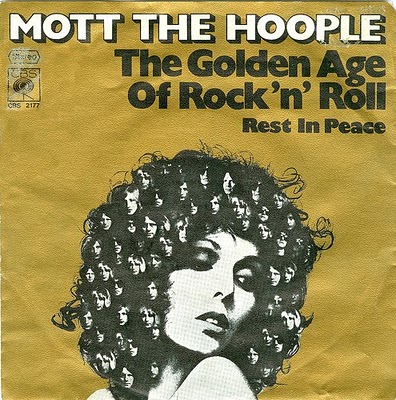 Glam is illreputed as apolitical and selfish – would you agree?
Glam is illreputed as apolitical and selfish – would you agree?
Yes, I think this is the other reason why the word “revolutionary” is something I would avoid using about glam, even though certain aspects of it were progressive. Glam was very much about abandoning the Sixties idea of the counterculture and the hopes of some kind of collective advance. Instead it embraced the idea of individual escape – through stardom, for the performer, and through fantasy and reverie, for the fan. Fans might hope to make it out of their repressive and boring backgrounds through becoming a Bowie-like figure themselves, and some Bowie fans would grow up to do just that – Siouxsie Sioux, Adam Ant, Billy Mackenzie from The Associates, Peter Murphy of Bauhaus. But for most fans the kind of fantastical decadent lifestyle that Bowie represented, or the aristocratic existence that Roxy Music seemed to propose – this was something they would only ever access in their dreams, through listening to the records or attending the concerts, for which they might dressing as a Ziggy look-alike or, in Roxy’s case, a retro-glamour recreation of bygone Hollywood.
Sixties rock wanted to change the world, but I think glam was much more complicit in “the ways of the world” – the reality of inequality. The star system itself is an analogue of an unfair world. So glam’s embrace of showbiz values could be seen as betrayal of what Sixties rock promised.
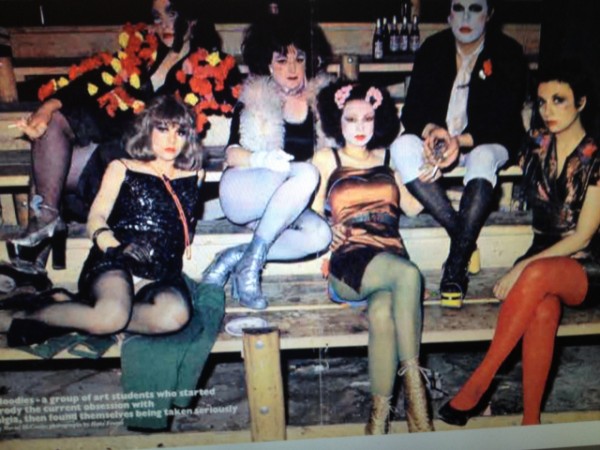 You compare Bowies manager Tony deFries with Donald Trump – could you explain that?
You compare Bowies manager Tony deFries with Donald Trump – could you explain that?
Trump instinctively understands the power of image and hype when it comes to making deals. He knows that projecting an illusion of power and confidence is what really matters. In business, appearance is reality. So he talks about “truthful hyperbole” – it’s essentially the art of the conman, a confidence trick where you making something real by pretending it already exists. This kind of thinking runs deep in the American grain. You can trace it back to figures like the showman P.T. Barnum, who used all kinds of publicity stunts to get people to come to his events. It also has connections the positive thinking movement as developed by figures like Norman Vincent Peale (who was Trump’s pastor and officiated at his first wedding). The idea here is that if you will it, it will happen; believe in yourself and you make others believe in you. Tony DeFries, although British, very much admired the American way of making deals and selling stars – as soon as he could he moved the base of his company MainMan to New York. MainMan’s approach to marketing Bowie in America was to present him as if he was already a star – going everywhere in a limousine, with bodyguards that he didn’t need because very few people in America knew he was. So it’s very Trump: you pretend, and then the pretence becomes reality. One of my favorite facts about Trump is that he used to ring up newspapers and pretend to be his own publicist, and talk about all the amazing things Trump was doing. This kind of thing is harmless and even charming in the entertainment world, where bullshit and bravado are what you expect, what keeps it all going. But when it moves to politics, it’s a catastrophe.
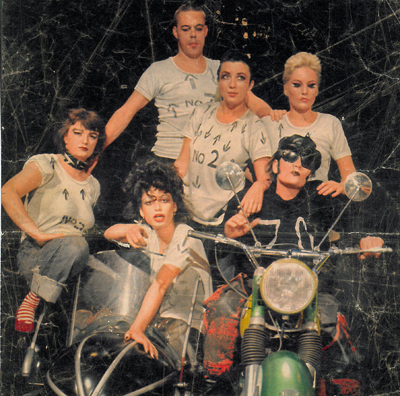 How important was glam for the upcoming of punk?
How important was glam for the upcoming of punk?
Probably more than half the punks were huge glam fans – they loved Bowie and Roxy particularly, but many of them also liked The Sweet and Gary Glitter. John Lydon was a massive fan of Alice Cooper – he’s described Killer as the greatest hard rock album of all time and when he auditioned to be the singer of the Sex Pistols, he mimed to “I’m Eighteen”, Cooper’s first hit, on a jukebox. He got the job through the grimacing faces he pulled while miming, not his singing ability. And although punk was much more about urban reality and political issues, there is a theatricality within punk if you look closely. “Johnny Rotten” and “Sid Vicious” are obviously personae, exaggerated cartoon characters. Siouxsie Sioux was intensely glamorous with her ice queen persona. In fact you could say that Siouxsie is the first real female glam star, whereas Suzi Quatro – as great as she was – was more like an unglamorous street punk.
Another thing about glam is that the tougher, rougher side of the music looks ahead to punk. You can connect records by Slade, Sweet, Quatro, Mud very directly to the punk sound – its back to basics simplicity, the roaring attack of the vocals, the stomping beat. If you listen to Oi! punk especially – Sham 69’s “If the Kids Are United” or songs by Cockney Rejects – you can hear the glitter connection very strongly.
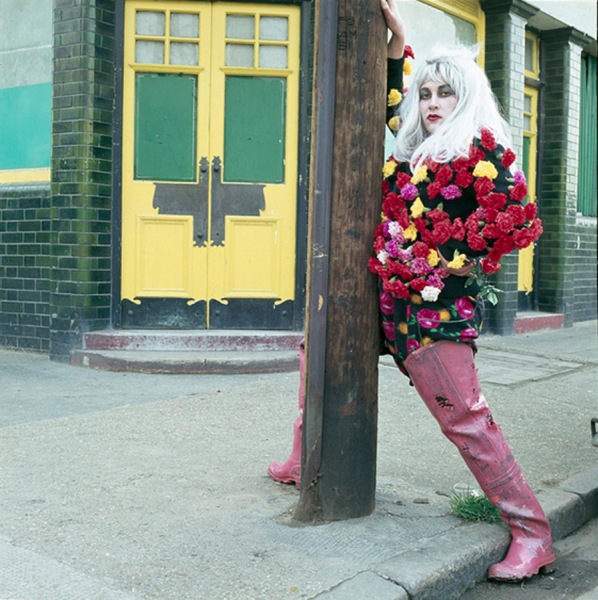 Glam also happened in Germany, but in a very softened way – why are the British (and the American) much more brave and daring when it comes to style, fashion, drag…?
Glam also happened in Germany, but in a very softened way – why are the British (and the American) much more brave and daring when it comes to style, fashion, drag…?
I hadn’t really come across much in the way of examples of German or European glam, although I know that they were quite a few North European pop groups with a stomping glitter sound modelled on the Sweet and Gary Glitter. But in terms of equivalents to Bowie or Roxy, I couldn’t find many examples – do tell me what I’ve missed! In the book I advance the idea that Kraftwerk were in some senses related to glam – the strong visuals and stylized performance, the retro-glamour references, and particularly the song “The Hall of Mirrors”, which is one of the greatest songs about stardom that pop has produced, a German counterpart to Bowie’s “Fame” or Cockney Rebel’s “Mirror Freak”.
I’d say our art schools have something to do with the image-consciousness of British pop, but glam actually didn’t have that strong an input from art schools, at least compared with either Sixties rock or postpunk. Bowie never went to art school or had any higher education. In fact I think the only major glam group that had the art school sensibility was Roxy Music. Probably more significant as an influence on glam was British showbiz and music hall values. Most glam performers were working class and if they had literary or artistic tendencies, it was through self-education. Bowie is the classic example of this – it all came from his very wide, if unfocussed reading, and the influence of mentors like Lindsay Kemp and his early manager Ken Pitt.
Glam produced a very very different image of a pop star compared with folk musicians like Bob Dylan – would you agree that glam is the most plausible incarnation of pop because of its artificialness?
Well, of course “Bob Dylan” is a stage name, an invented persona, and it’s interesting that Todd Haynes, who made the glam movie Velvet Goldmine, also made the Dylan film I’m Not There, in which he got completely different actors and actresses to play different phases of Dylan’s career. So there is an argument that Dylan had something of the glam artifice about him – certainly he was a big influence on Bowie. But yes I would say Dylan is not “glamorous” in the sense that glam was, which was a sort of ironic or parodic adoption of Hollywood and Broadway glamour, mixed up with the iconography of Fifties rock’n’roll. There is nothing camp about Dylan and he tended to dress in cool but fairly basic clothing.
I think one argument would be that glam is honest about the artifice and celebrates the intrinsic unreality of being onstage. It accepts and affirms the impossibility of being authentic if you’re a public figure – you are always necessarily performing, putting on an act. Glam says “this is how it is, let’s have fun with it, let’s shift personae rather than stay fixed in a supposed ‘true self’”. All that is true, but in another sense I think the promise of rock, or its hope, was that you could bring some kind of reality onto the stage – the sexual reality of early rock’n’roll, the callous unromantic sexuality of the Stones, the Who smashing their instruments in a fit of spontaneous rage, the Velvet Underground’s gritty urban realism, and then later punk rock. These moments and movements in rock history are premised on ideas of truth, honesty, authenticity. And that side of pop carried on with rap, with grime, etc.
So essentially rock has never worked out whether it stands on the real versus fake, authentic versus inauthenticity issue. It oscillates back and forth between yearning for truth and celebrating the illusion. I call it the glam / anti-glam dialectic.
 There are only few women – or in fact only Suzi Quatro – in the first Glam wave. Why?
There are only few women – or in fact only Suzi Quatro – in the first Glam wave. Why?
(And what do you think about Amanda Lear or Grace Jones?)
This is true and again it’s one reason why I hesitate to describe glam as “revolutionary”. Its sexual politics had both radical and regressive elements. There was a fair amount of sexism and the conduct of certain glam stars or music industry figures was abusive. Suzi Quatro is the one big exception. I think the initial problem for “female glam” is that for a man to glamorize himself with make-up and costumes feels like a transgression of sexual norms. But for a woman, that’s just what you’re expected to do. Quatro got around it with her tough tomboy image which in a sense was un-glamorous (although it was charismatic). I think when you start to see the female glam wave is during punk and New Wave. The strident, harsh nature of punk / postpunk music seems to allow for an angular, visually shocking image – a glamour that is female without being feminine or pretty. Indeed it is an intimidating, non-seductive glamour, often, as with Siouxsie Sioux and her ice queen image. Then there is the glamorous but kooky New Wave image – Nina Hagen, Lene Lovich, and in a more retro and ironic way, the women in the B-52s. Later there’s Annie Lennox. Grace Jones is very much part of this female glam wave – her classic singles and albums merge disco, glam and postpunk aesthetics, while her live concerts were the missing link between glam and performance art.
Amanda Lear is a sort of footnote to glam, in the sense that she steps off the cover of the second Roxy album and into a disco career which is very visually oriented – her first album was called I Am A Photograph, I believe. I have a passage on Lear in the Roxy Music chapter.
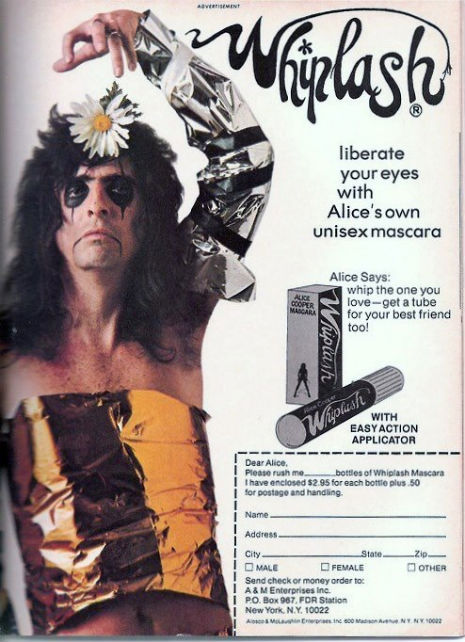 Why has the wearing of make up, women’s clothing, glitter and high heels (by men!) such an enormous power (in terms of shocking, disgust, emancipation maybe)?
Why has the wearing of make up, women’s clothing, glitter and high heels (by men!) such an enormous power (in terms of shocking, disgust, emancipation maybe)?
I don’t know if it does have that shock power anymore. Even in the Seventies it was quite quickly assimilated. In Britain I think this was helped by the fact that we have quite a longstanding native tradition of male cross-dressing and camp in mainstream middle-of-the-road entertainment. The drag queen Danny La Rue was one of the biggest showbiz stars of the post-war British era, and there are very evidently gay and camp characters in the popular Carry On series of comedy films. There is alsoa tradition of men putting on women’s clothes, wigs and make-up that goes back to the deepest roots of British theatre – Shakespeare’s companies had boys playing the women’s roles. In the second world war, British troops were entertained by all-male companies with soldiers dressed up for the female roles. That carried on after the war with a huge popularity for entertainment troupes with names like Soldiers in Skirts! And I can remember in my home town whenever the local football team was trying to raise money for charity, some of these big burly blokes would dress up as women and go round the town in heels and frocks. It doesn’t take a lot to persuade a British man to put on lipstick and a dress!
Certainly by the Eighties with hair metal it just seemed perfectly commonplace to have rock ’n’ rollers with long blonde blow-dried hair and eye make-up. I don’t think Boy George was even that threatening – he seemed such a cuddly, harmless figure.
Today it feels like we are un-shockable, certainly by anything to do with clothes or visual presentation.
Would you draw a line between more subtle acts like Bowie or Roxy Music and more vulgar (hope you don’t get me wrong, I didn’t find a better word) acts like The Sweet or Slade – why are they all glam?
People talk of high glam and low glam. The “high” glam would be the Bowies, Roxys, Sparks, where the lyrics are literate and clever, and there is equal emphasis on albums as there is on singles. The “low” glam is all about singles and about being danceable. Groups like The Sweet, Gary Glitter and Slade were huge in discotheques – the drums were very prominent and relentlessly pounding. This was the dance music of its day. And whether at the disco in the form of deejays playing the singles or at the big concert halls playing as a live act, outfits like Slade were all about physical release, an energy burst – it was a rowdy noise to let working class kids and teenagers let loose their frustrations and have a wild time. Whereas with a Bowie or Roxy album you could dance to certain songs but it was more about drifting off into a dream world in your bedroom. In that sense Bowie and Roxy had certain connections to the progressive music of that era that was totally album oriented and immersive – your Pink Floyds and King Crimsons.
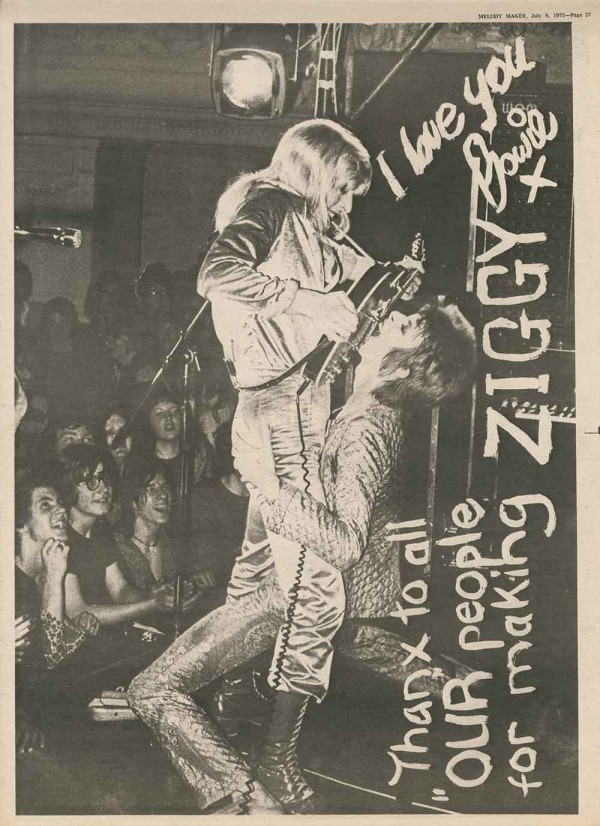 Were the London Blitz Kids / Beautiful people more Glam than the originators? I think it’s very interesting that Bowie teamed up with Steve Strange (video “Ashes to Ashes”)
Were the London Blitz Kids / Beautiful people more Glam than the originators? I think it’s very interesting that Bowie teamed up with Steve Strange (video “Ashes to Ashes”)
Yes, this is the second-wave of glam really – these are the children of Bowie and Bryan Ferry. So the visuals are ratcheted up to a new degree of artifice and excess.
Your chapter about Bowie is already regarded as one of the most important pieces about him – is it because you are a devoted fan or because of his undisputable extraordinariness?
I don’t know if I a fan exactly. I find him fascinating and extraordinary as a pop phenomenon, and also as a human being with flaws. I also have doubts and misgivings about certain aspects of philosophy. But I adore certain songs and records and phases of his work. For me the work that I love the most is all of Low, the song “’Heroes’”, parts of Lodger, and then the album Scary Monsters. So that would mostly the period he was living in Berlin and very much influenced by German music. This happens to be a period when I much more aware of music as a teenager, and what Bowie was doing then connected to postpunk. Low had a huge influence on groups like Magazine and The Associates and Simple Minds – and these were some of my favorite groups. But I love things from all across his career – “Fame”, I think is an extraordinary song, and “Golden Years” is wonderful, and so is much of the early classic music that people think of as Bowie’s archetypal glam phase. “Space Oddity” is a song for the ages and Hunky Dory is a wonderful album. Through doing this book I grew very fond of his first record, when he was completely out of step with rock music and doing these strangle little comedy songs.
But there are various Bowie classics that I’ve never really connected with – I think Ziggy Stardust is over-rated, the concept seems a bit garbled and I feel like you had to be there in ’72 for it to really resonate. I’ve never really got deeply into Diamond Dogs, Young Americans, or Station to Station, although there are great songs on all of them. Part of this comes from not listening to the albums in real-time, as they were released – the first one I would have done that with is Scary Monsters, in 1980, because a friend bought it and I taped it. So I’ve listened to Bowie’s work in this jumbled-up sequence. If you heard Station To Station when it came out, it would have seemed a leap ahead from Young Americans. But I heard it after Low, which I’d had and loved for years, and so it’s always seemed underwhelming to me.
You have to remember, I grew up during an era when albums cost money and you had finite resources, so it wasn’t easy to listen to an artist’s complete work, in the chronological sequence like it is now. And also there was so much going on in current music that you didn’t necessarily have time to school yourself on every classic album.
I would say that I don’t have that teenage identity-formation thing with Bowie because when Ziggy came out I was about 9. For me the teenage identity-formation syndrome occurs with the Sex Pistols and the postpunk groups, figures like Green from Scritti. And the very last sort of singer I identify with in that Bowie-fan way would be Morrissey. After that I grew out of it. For me rather than a role model or a figure you identified with, Bowie was always there already as this sort of monumental pop figure, like the Beatles or the Stones. I had best-of compilations of all three artists that I’d taped off friends. You knew these artists as greatest-hits first rather than as the original albums. And you also heard their songs on the radio constantly, as golden oldies. So you don’t get that fan feeling of a special relationship with the artist, like when you are among the first people to get into them. There’s not that sense of ownership.
 The chapter about Bowie starts with his (made up) organization for boys wearing long hair – what was the difference between hippie hair and glam hair?
The chapter about Bowie starts with his (made up) organization for boys wearing long hair – what was the difference between hippie hair and glam hair?
Hippie hair was much more natural looking, flowing, and usually it wasn’t dyed. Glam hair was more stark and angular and often colored with a very inorganic looking dye. Hippie aesthetics generally were Romantic and sometimes pastoral. Glam was trying to look alien and very urban.
Aside: I really love the chapter “aftershock” with all its successors and followers – especially the part about Kate Bush who irritated me as a child: I loved and adored her, but I sensed that her performance and music was completely outdated. She seemed like a fairy to me which was nice in a way, because “on the other side” were tough guys like The Stranglers…
I’m so glad you liked it. Some people really dislike that section, they seemed to want me to have some kind of big summing-up and conclusion. But for me it was so much more fun to jump around and point out all these strange connections and echoes. The non-linear format, which is almost like a blog, freed me up enormously just to comment when I had something to say.
Yes, Kate Bush did seem a bit too “pretty” and ornate and flowery at the time of New Wave. But “Wuthering Heights” is an extraordinary song – Johnny Rotten is a huge fan of it, and of her. And then as she takes control of her own production, she really becomes pretty out-there and avant-garde, by the time of Never For Ever and The Dreaming. The latter makes a good comparision with PiL’s Flowers of Romance. Sometimes her music is just too much – too rich, too detailed, too dramatic. But yes very much an extension of glam, especially when you take into account the extraordinary videos.
Where can we see and here the heritage of glam nowadays? Will Lady Gaga carry the torch? Is it women in general who are more glam today? What about boys?
It does seem like the women are the most glam-influenced people, at least in mainstream pop culture. There are various queer and trans performers who touch on glam ideas, like Perfume Genius and Mykki Blanco, but so far they have stayed on the pop cultural margins, and in this book I’m really focused on pop – people who became stars. So I see the most interesting, if somewhat indirect, legacy of glam in rap – these are the people who are writing songs about fame and stardom, and who are living out this excessive fantasy lifestyle that is completely unmoored from reality. Kanye is the Bowie of today, while Future is perhaps the Iggy Pop. And then you have Young Thug, who actually wears a dress sometimes.
Ariel Pink definitely has some glam elements – he did a video for “Kate I Wait” where he wore women’s clothing, he has this public persona that is invented and provocative, he did the song “Menstrual Man” which is about wanting to change genders. But I felt that with various articles, and the book Retromania I had probably said enough about Ariel at this point! His ex-girlfriend Geneva Jacuzzi, incidentally, does these song videos that are visually a very compelling blend of hyper-glam and performance art – well worth checking out on YouTube.
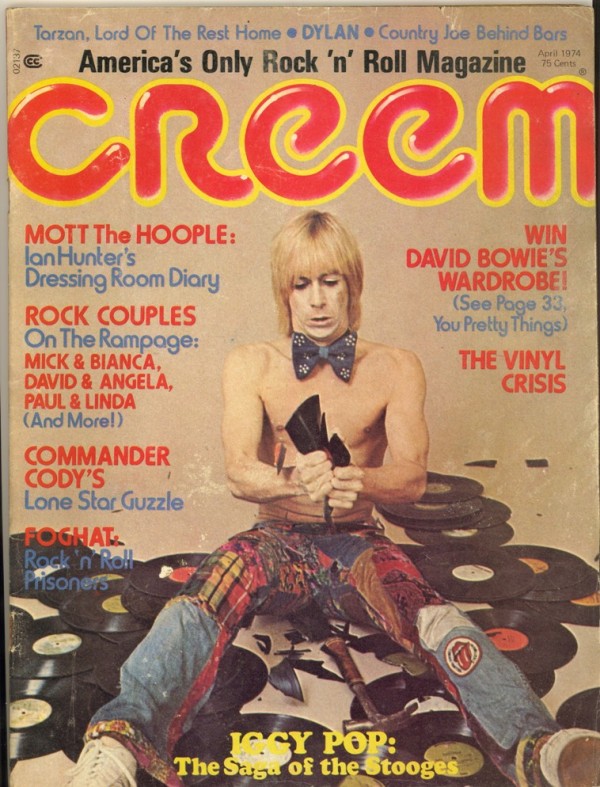
In your recent book “Retromania” you were reflecting the perpetual repetition of styles and sounds in pop music – can you imagine a modern way of glam?
Yes I think it would be the things I’ve mentioned above in rap and Top 40 pop. Not the literal replays of glam sonics that were done (very entertainingly) by groups like Denim in the Nineties or currently by the Italian group Giuda, who have replicated the stompy bootboy rock sound very well. But it would be where the spirit of glam – artifice, personae games, a self-reflexive approach to fame – has resurfaced in genres of music that don’t directly connect to rock traditions.
 You’ve also written “The Sex Revolts” together with your wife Joy Press more than 20 years ago – do you think that now the time has come (given to the huge backlash of misogyny in pop business) for a new edition?
You’ve also written “The Sex Revolts” together with your wife Joy Press more than 20 years ago – do you think that now the time has come (given to the huge backlash of misogyny in pop business) for a new edition?
Yes, I think The Sex Revolts is suddenly timely again in a way that it perhaps hasn’t been for a while. Partly because of these instances – that seem to be going on in many different nations – of abuse of women by rock stars, or mistreatment of female performers by managers and producers. But also because it feels like misogyny and masculinism are driving forces in the current political culture. There is a very interesting new book about the alt-right and online culture called Kill All the Normies, by Angela Nagle, that draws on The Sex Revolts in a couple of places. It’s not news that there’s been a crisis of masculinity that has convulsed pop culture for the last two or three decades – men no longer knowing what their function is, feeling emasculated by the growing power of women as earners and in the workplace… There have been all kinds of symptoms and reactions against these changes. And now with the rise of populism and the taste for a very macho style of authoritarian government, manifesting itself in America through roll-backs of environmental regulations on industry (“let’s get back to raping Mother Earth, guys”) and a bellicose approach to foreign policy, as well as the backlash against political-correctness and sensitivity… it feels like the question of why men hate and fear women is a more important problem than ever to grapple with. A movie like Fight Club, with its angry young men reacting against consumerism and “new man” sensitivity – which they see as an emasculating decadence – now appears to be a prophetic parable of our era. And the second series of Jane Campion’s television drama Top of the Lake is a deeply unsettling dissection of masculinity, sexual intimacy and gender roles in the age of online porn. There’s a horrible feeling of going backwards at the moment, a reversal of all the slow, incremental but real progress made in the last couple of decades.
All Images made available by Simon Reynolds.
This articles was originally published in a German version in Missy Magazine, Germany, who were so generous to let us publish the english version here.
 Make sure to catch Simon Reynolds on this current reading tour dates:
Make sure to catch Simon Reynolds on this current reading tour dates:
– Berlin, HAU, 4.12.
– Bremen, Schwankhalle, 5.12.
– Frankfurt, Milchsackfabrik. 6.12.
– Cologne, King Georg, 7.12.
– München, Kammerspiele, 8.12.
– Mainz, Programmkino Capitol, 9.12.








